Photo: M. Di Martino
Tigresa’s 215 day tracking route (13,607 km)
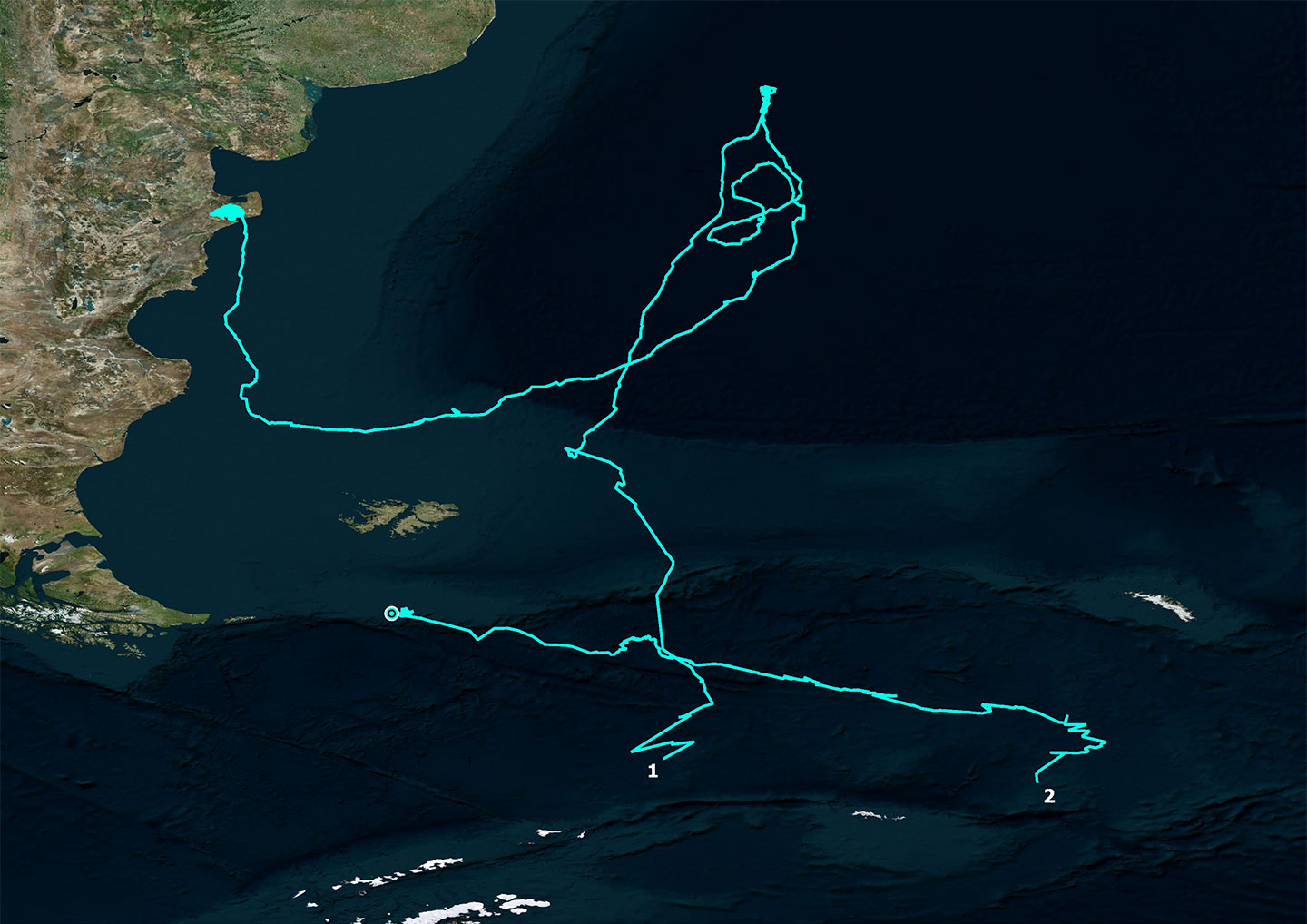
April 21 – April 24, 2020
Though we recovered the signal from Tigresa’s satellite tag 20 days ago, her transmitter’s battery died on April 24. At that time Tigresa and her calf were above the Namuncurá-Burdwood Bank Marine Protected Area. The concentration of her transmission points on the southern edge of the bank indicates that they were probably feeding there. Tigresa scored several records: she stayed 69 days inside Golfo Nuevo after being tagged, and was the last of the 23 tagged whales to leave the Península Valdés. She was also the mother who reached the southernmost latitudes, and her tag was the last to cease transmitting. We hope to see her again soon, in the waters of the Peninsula, when she returns to wean her calf.
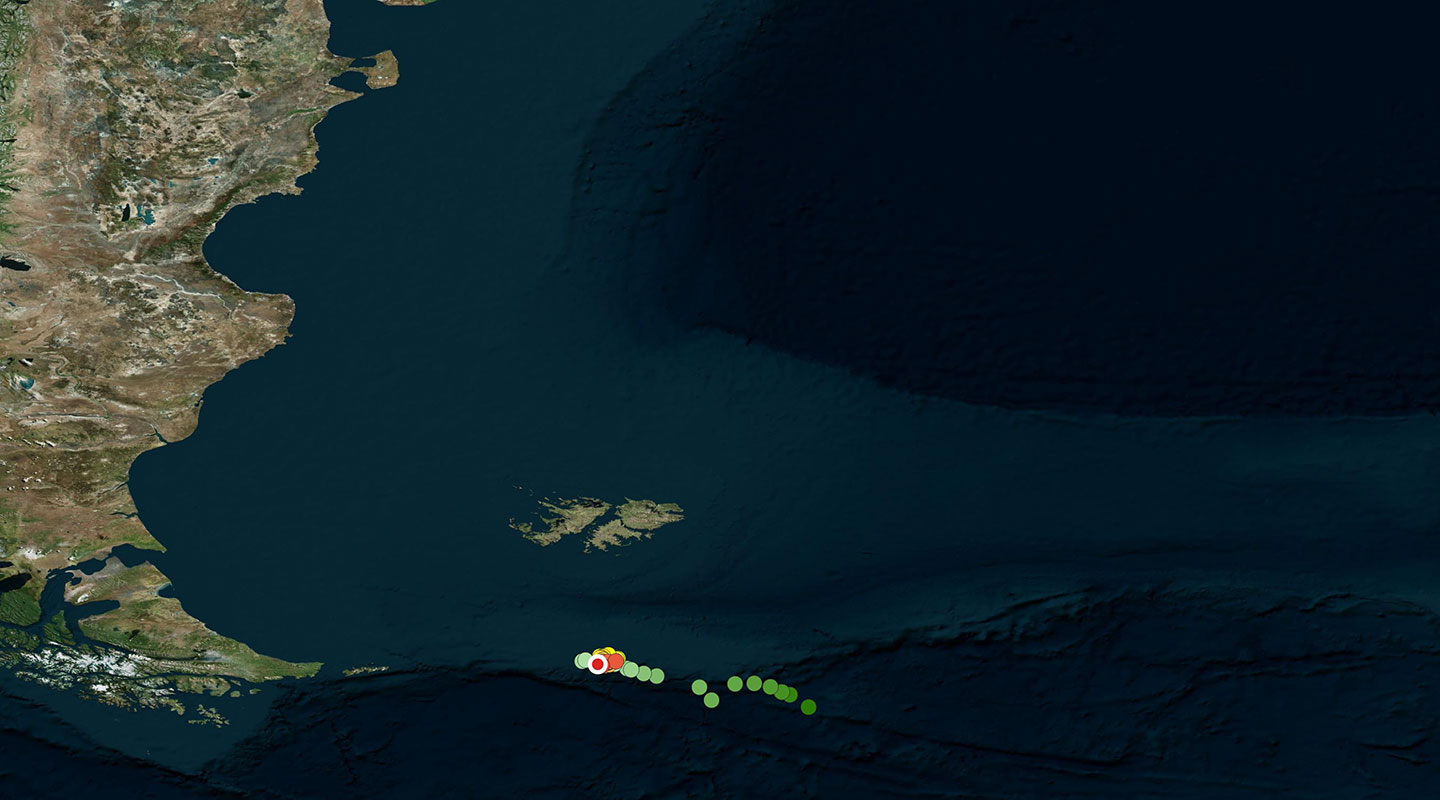
April 14 – April 20, 2020
Tigresa continued traveling in the same direction through the Scotia Sea, except for a slight detour during which her speed slowed, a possible indication that mother and calf had found a patch of food. They are now over the extreme southeast section of the continental shelf, in the Namuncurá-Burdwood Bank. The southern border of this submerged marine plateau is the edge of the continental slope. The seabed of the Bank is a lush garden of sponges, cold water corals, and endemic species (unique species only found at this site). Misterio also came to this zone, in the middle of March, where he remained feeding for a few days.
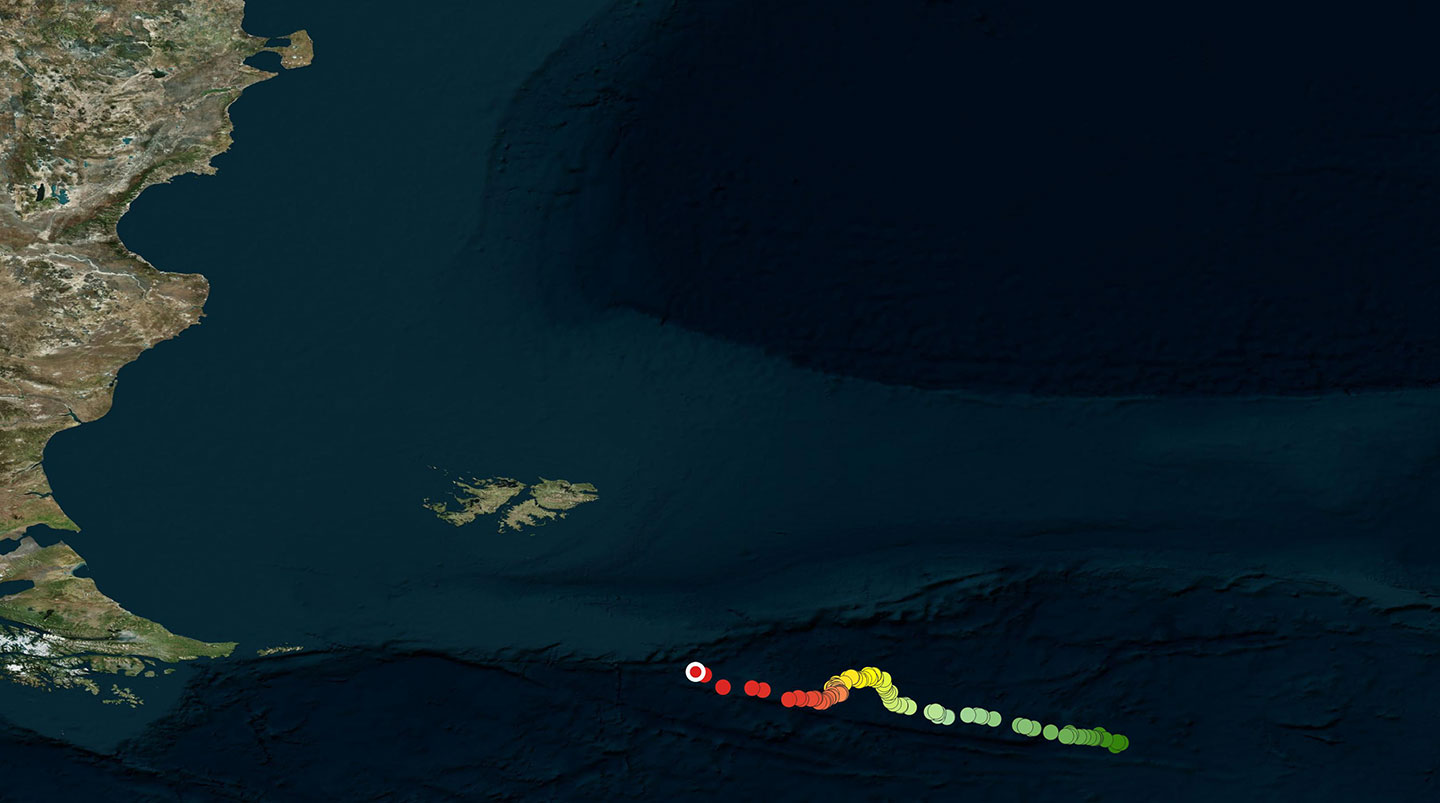
April 07 – April 13, 2020
The day after we regained contact with Tigresa, she was at a point almost equidistant from the South Orkneys and the South Georgia Islands. From there Tigresa traveled through the Scotia Sea westward at 100 kilometers per day, against the Antarctic Circumpolar Current. If she continues on this course, mother and calf will soon reach the Namuncurá-Burdwood Bank submerged marine platform.
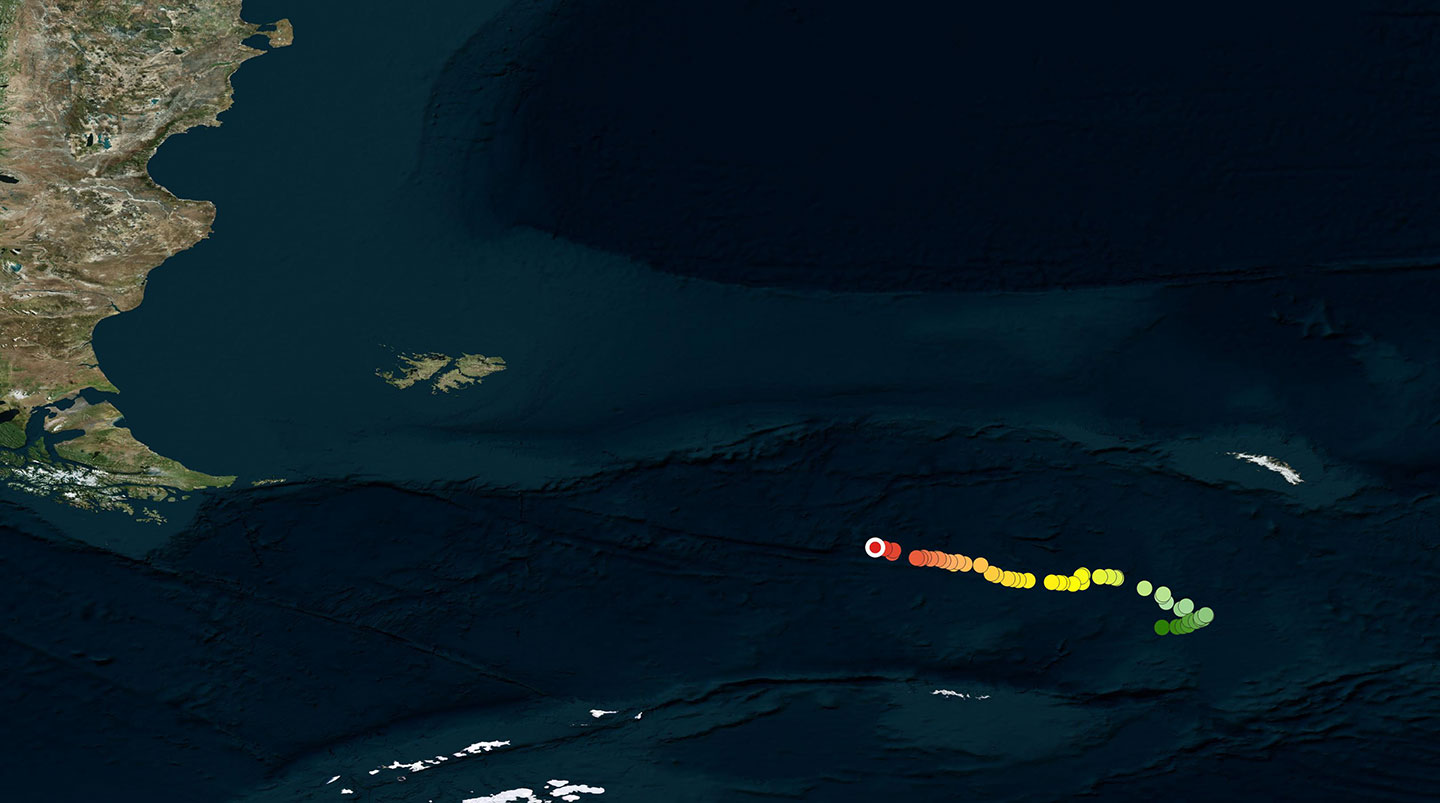
April 05 – April 06, 2020
We recovered Tigresa’s tag signal! On April 5, 2020 after 45 silent days, Tigresa’s satellite tag once more began transmitting. Her last position before losing contact at the end of February indicated that this mother and her calf were heading towards the Antarctic Peninsula. At present they are in the Scotia Sea, 400 kilometers northeast of the Orkney Islands.
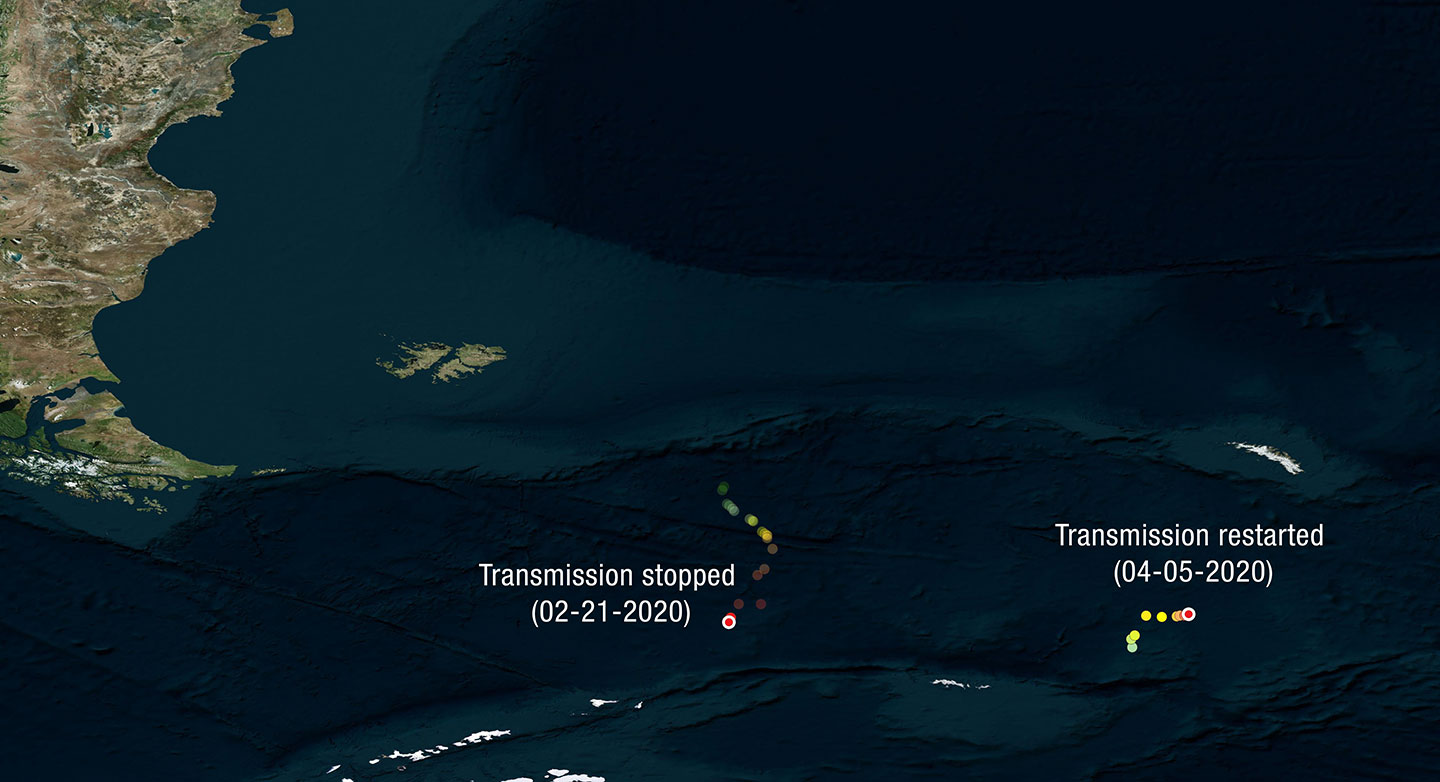
February 19 – February 21, 2020
After 151 days of transmissions, we lost contact with Tigresa, just when she had reached 52° S latitude and seemed to be heading towards Elephant Island, the northernmost of the South Shetland Islands. This mother stayed inside Golfo Nuevo with her calf for 70 days after tagging, traveled southwards over the continental shelf, crossed the continental slope, and then explored the deep oceanic basin for weeks. At the end of January she began her trip straight south to sub-Antarctic waters, where we lost her trail a few days ago.
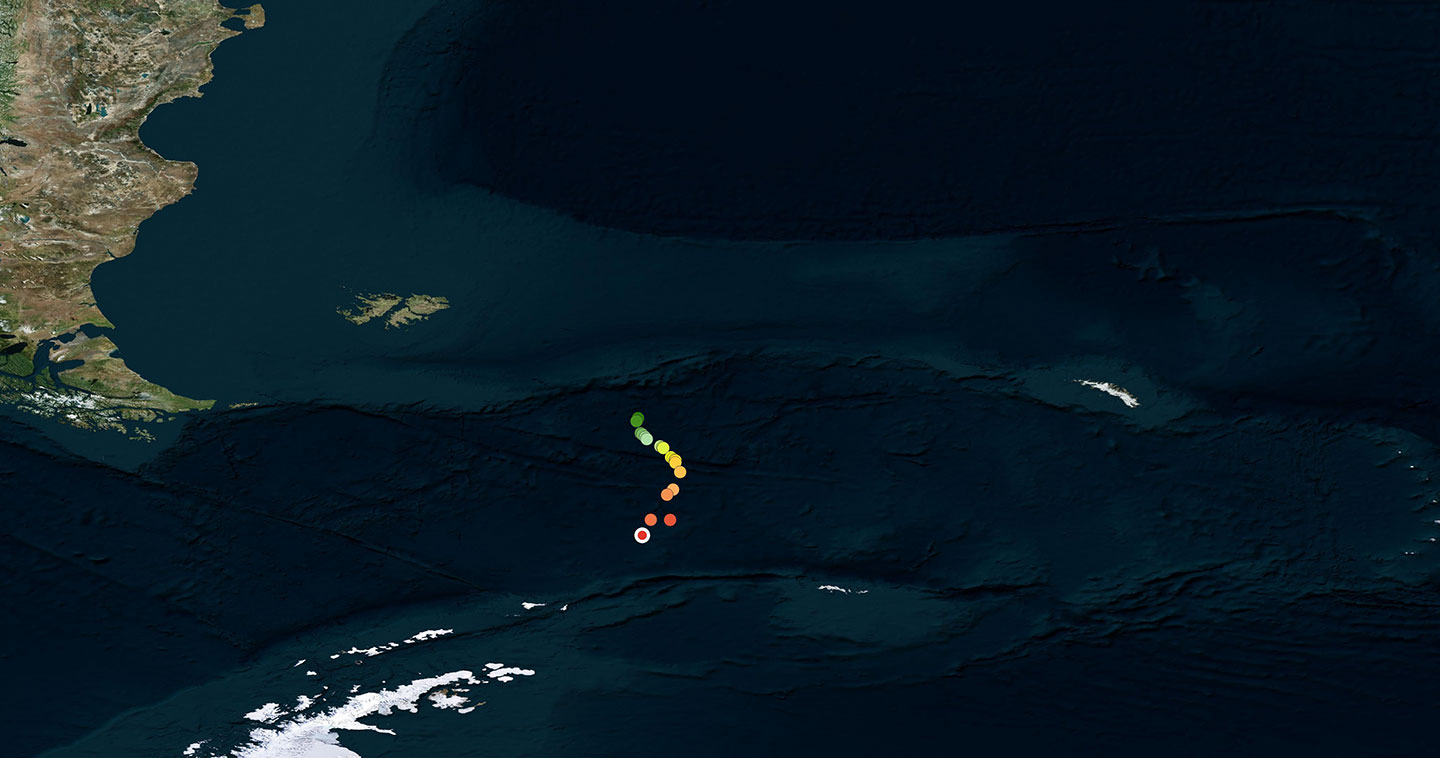
February 11 – February 18, 2020
Tigresa and her calf traveled south, stopping briefly along the way. They are now the farthest south mother-calf pair, swimming in the Scotia Sea, at latitude 56° S.

February 07 – February 10, 2020
Tigresa and her calf continue to feed east of the Malvinas (Falkland) Islands. Will the mother and calf pairs continue their travels southwards to subantarctic waters or will they remain in Patagonian latitudes?

January 29 – February 06, 2020
After travelling 450 kilometers south, Tigresa and her calf have stopped to feed at the northeast of the Malvinas (Falkland) Islands.

January 21 – January 28, 2020
Tigresa and her calf are traveling southwest in the deep ocean. During the last week they have covered 722 kilometers. Will they continue southwards or will they return to the shallower waters of the Patagonian continental shelf?

January 12 – January 20, 2020
The tireless Tigresa seems to have finally found a good feeding area. She and her calf have remained more than 7 days in the same zone, in the deep waters off the southern coast of Buenos Aires province.

January 06 – January 11, 2020
Tigresa and her calf never rest! They continue traveling, this time northwards. Tigresa’s calf is already 5 months old (it was first seen on July 30, 2019), a fact we know because of the various projects studying the right whales at Peninsula Valdés.

December 29, 2019 – January 05, 2020
Tigresa and her calf traveled in a large clockwise circle, stopping a few times to feed. After finishing their circular journey they swam off in a northeast direction. These two whales are always on the move, they have yet to remain various days in any section, as all the other females with calves have done.

December 22 – December 28, 2019
Tigresa continues moving from place to place… during this past week she and her calf swam towards the northeast and stopped for two days in the deep ocean basin. They then continued their circular route towards the north and now swim on towards the southwest.

December 16 – December 21, 2019
Tigresa continues moving from place to place. It seems she has not yet encountered a good region where she can remain for a few days to feed and rest. During this last week Tigresa and her calf swam about 450 kilometers to the northeast.

December 05 – December 15, 2019
Tigresa remained for a short while in the middle of the continental shelf swimming southwards. She then began traveling on a very long eastward route, swimming about 850 kilometers in 7 days. Today both mother and calf are in the deep waters of the South Atlantic Ocean Basin.

November 26 – December 04, 2019
Tigresa and her calf stayed inside Golfo Nuevo until December 1st, when the mother decided to leave. Since they left they have traveled 380 kilometers straight south, without stopping. Tigresa was the last whale with a satellite transmitter remaining in the waters of Valdés Peninsula. The scientists who follow up on the individual whales will now have more time to analyze all the information collected during their observations these past three months.

November 17 – November 25, 2019
After remaining various days close to Puerto Pirámides, where they were seen by tourists, Tigresa and her calf are now in the southern coastal area of Golfo Nuevo, almost at the mouth of the gulf. The scientists who are tracking whales spotted them resting tranquilly close to the area of Bahía Cracker.

November 10 – November 16, 2019
Tigresa and her calf swam from Punta Cormoranes on the northern coast to Punta Este on the southern coast of Golfo Nuevo, not far from Puerto Madryn. She and her calf are now close to the isthmus that connects Peninsula Valdés with the continent.
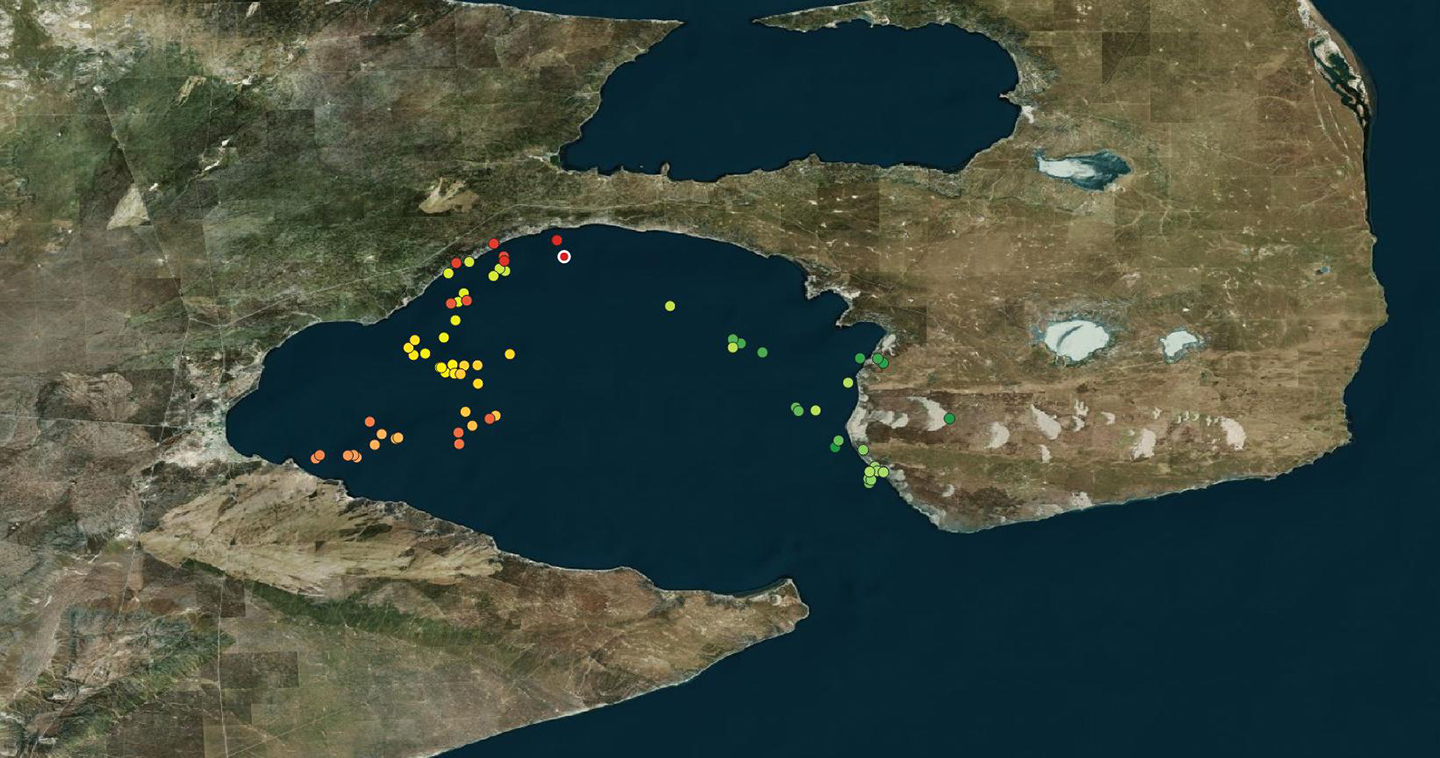
November 2 – November 9, 2019
This enormous mother and her calf continue exploring the deep waters in Golfo Nuevo, making a few visits to the costal areas which are protected from the winds. Today Tigresa is only 5 kilometers away from Paciencia, not far from the entrance to the gulf.

October 27 – November 1, 2019
Tigresa remains in Golfo Nuevo and was observed two days ago by the tracking team. One of the principal problems concerning whale management in this zone is the constant seagull attacks on the whales, with the purpose of feeding off their skin and fat. The immediate impact of this interaction is manifested by the temporary interruption of the calves suckling milk from their mothers. To control the growth of the seagull population there have been projects to reduce the availablility of food for these birds in the open pit refuse dumps in the area.
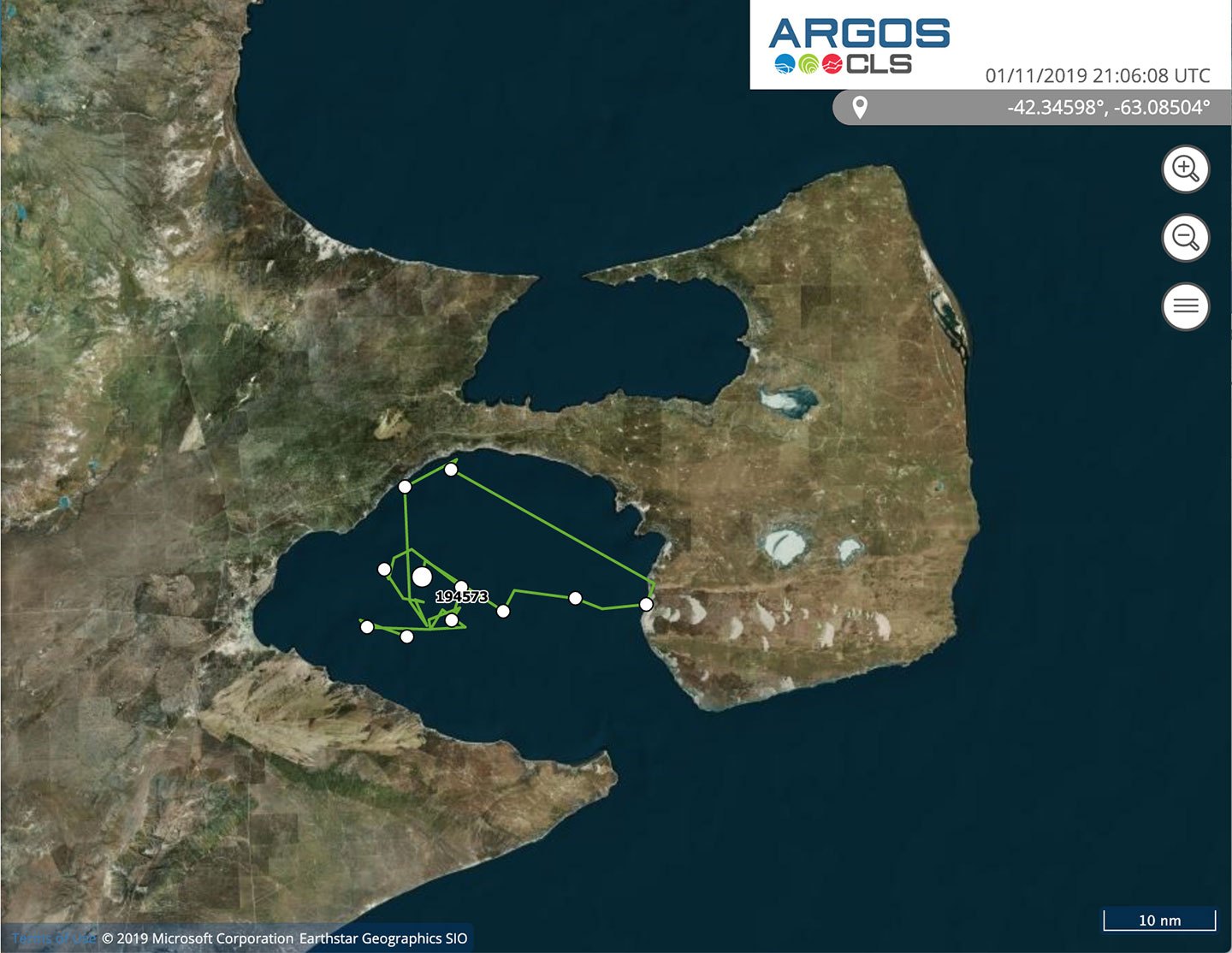
October 16 – October 26, 2019
Tigresa and her calf are moving from the shallow costal waters to deeper waters, but without leaving Golfo Nuevo. The whales seem not to be affected by the noise produced by the large number of boats that navigate within the gulf.
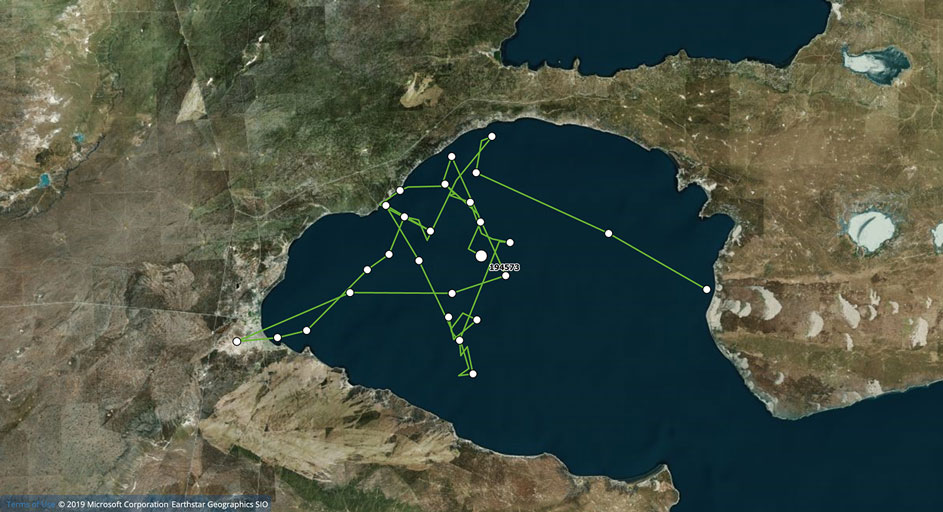
September 22 – October 15, 2019
Tigresa is an adult female who has had a satellite transmitter since September 22. She and her calf have traveled around different areas within Glofo Nuevo, from Puerto Pirámides to El Doradillo, traveling later on to the southern coast of the gulf. From the south coast they swam to the entrance of the gulf, but then returned to the area of Puerto Pirámides, continuing on to the coastal area of the isthmus of the peninsula.
